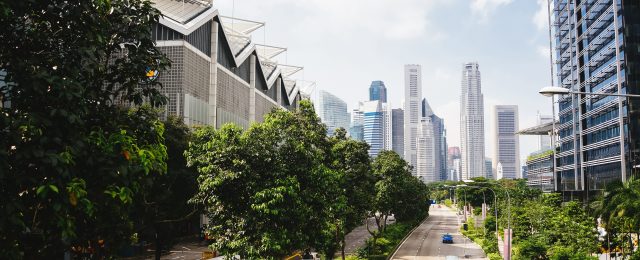For a sustainable planet, we need liveable cities

With the SDGs far off track from their 2030 deadline, one key actor has remained on the sidelines of our global sustainability dialogue — cities. Why we must urgently bring them into the conversation.
This year’s World Earth Day theme, Planet vs Plastics, will come as little surprise to those already in the sustainability movement. Three hundred and eighty tonnes of plastic are produced every year while only 9% are recycled. And, unlike other materials, plastic does not biodegrade: It can take 1000 years for each piece of plastic to break down. Our globe’s “plastic problem” became sufficiently ubiquitous in recent years that, in 2022, heads of states, alongside ministers of the environment and other representatives, finally passed a resolution to End Plastic Pollution at the UN Environment Assembly in Nairobi, leading to the forging of an international legally binding agreement to address the lifecycle of plastics.
Far less discussed, however, is the fact that much of the burden for managing plastic pollution and production will fall to cities. Around 75% of total plastic waste generation is estimated to come from cities, especially households and residential areas. Meanwhile, 75% is also the estimated percentage of the planet’s overall resources consumed by cities. Cities are responsible for up to 70% of the world’s global greenhouse gas emissions, despite covering only an estimated 2.7% of the world’s land surface.
Given these numbers, alongside the rapid rate of urban expansion, it is imperative that future discussions around plastic, as well as other pertinent global sustainability topics such as climate, poverty and housing, be initiated with the direct involvement of cities and local actors. As an example, enforcement of growing plastic bag bans have tended to be poor when carried out without the direct involvement of invested local actors. And yet, though a range of experts have acknowledged the role of cities in sustainability, it has been historically difficult for local representatives to engage in UN or other global deliberations. Additionally, when discussions on sustainability do target the urban context, they appear to garner considerably less attention from national governments.
Meanwhile, the deadline for the 2030 Agenda is fast approaching – and we are still far away from achieving our 2030 goals. On SDG11, sustainable cities and communities, we are on track to achieve only 10% of our targets. Seven years after the ratification of the New Urban Agenda’s (NUA) in 2016, only 40 countries have submitted their NUA reports – or approximately 20% of the agenda’s total signatories. Currently, local data collection processes are not always aligned with global agendas, 60% of SDG11 being untraceable. These reports would have allowed for the better tracking of this SDG, including tracing forward movement on key issues like urban disability inclusion or the experience of other marginalized groups within urban centres.
Overall, many of the programs and efforts that will put our planet on the path towards sustainability will need to be implemented in cities, where an increasing percentage of the population will be concentrated in the coming decades. Indeed, in 2013, the High-level Panel of Eminent Persons on the Post-2015 Development Agenda, proclaimed that, “Cities are where the battle for sustainable development will be won or lost.”
Now, over a decade later, recent developments indicate that things might finally be changing. COP28, held between November and December 2023 in the UAE, was pivotal: It was the first time cities were invited to the event as active participants. During the event, a Coalition for High Ambition Multilevel Partnership (CHAMP) was endorsed by over 70 countries. This was indicative of an increasing willingness from a number of national governments to work alongside their subnational counterparts, including cities and municipalities, in the formulation of Nationally Determined Contributions (NDCs). These will be used to determine key overall country contributions to the Paris Agreement.
Additionally, several recent, important programs from preeminent global organizations, such as the Clean Air Fund, Bloomberg Philanthropies and C40’s Breathe Cities project and the Resilient Cities Network’s Urban Ocean project, have been aimed at advancing actions at the local level: The first is focused on reducing air pollution, while the second is meant to address problems related to ocean plastics. Both programs are implemented at the municipal level, in coordination with local governments. Both also strongly resonate with broader global efforts to tackle climate change. It is imperative that any upcoming sustainability projects follow in their footsteps. If we are serious about getting our progress towards the SDGs back on track, the sustainability movement must begin to truly reckon with the outsized impact of cities, and of the various actors within them, in creating a sustainable future for all.